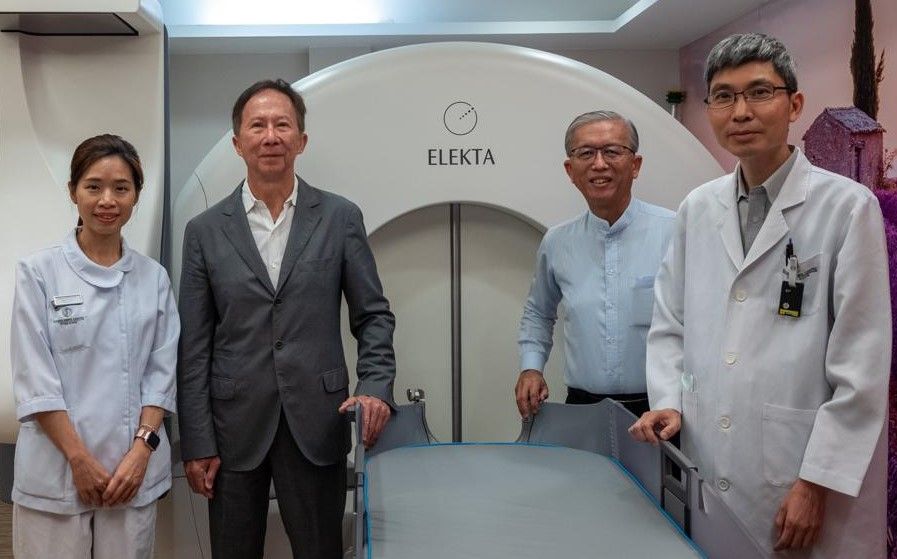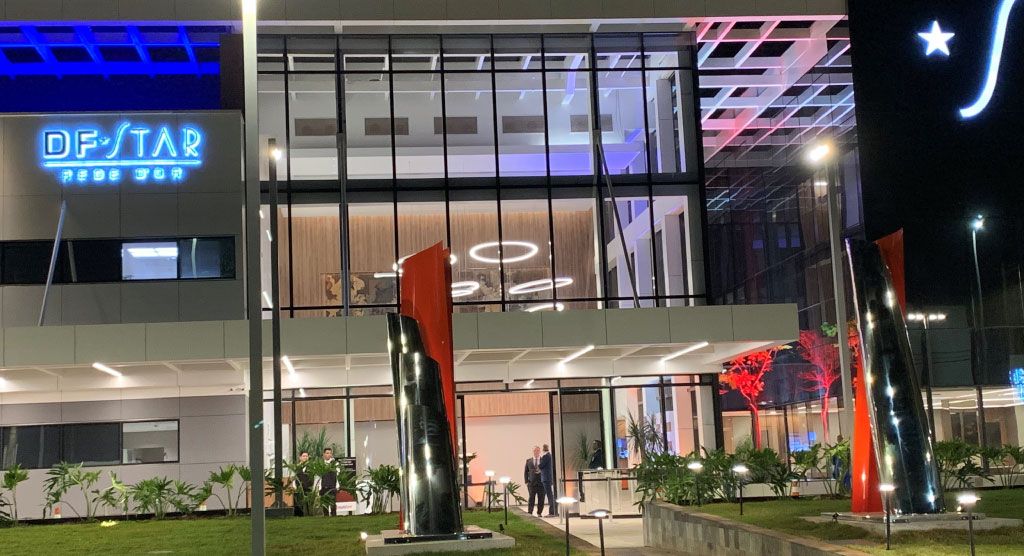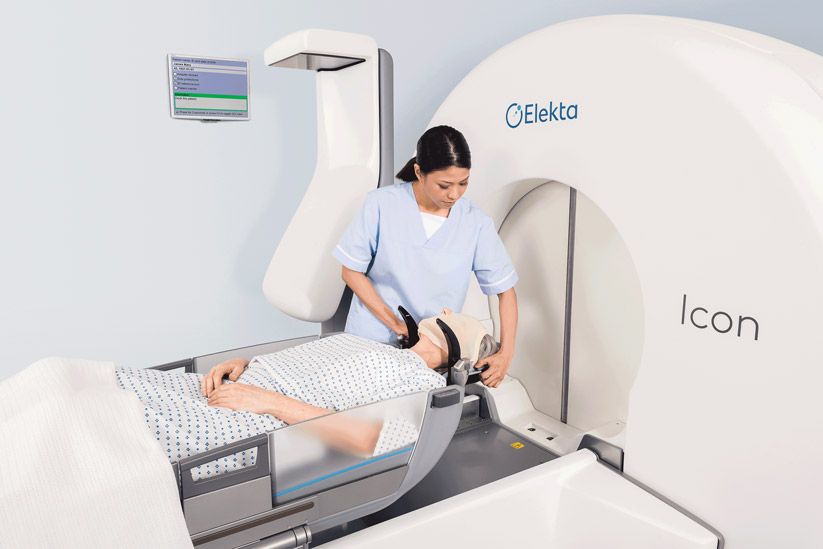Next-generation treatment plan optimizer supercharges Gamma Knife radiosurgery planning at The Brain Centre

Leksell Gamma Knife Lightning provides push-button planning ease at Hong Kong Gamma Knife center

It took a only handful of cases for The Brain Centre (TBC, Hong Kong) neurosurgeon Chung-Ping Yu, MD to appreciate the advantages of Leksell Gamma Knife® Lightning (GammaPlan v. 11.3.1), a new radiosurgery treatment plan optimizer that allows users to quickly and automatically create plans for multiple targets in less than a minute. Lightning increases automation and speed in the radiosurgery workflow, while also ensuring a personalized plan tailored to each patient’s needs. Moreover, the short optimization time allows doctors to generate and compare multiple plans from which to choose the best option.
“My preliminary conclusions after using Lightning from February to July this year is that optimization is extremely fast, typically less than 20 seconds.”
“My preliminary conclusions after using Lightning from February to July this year is that optimization is extremely fast, typically less than 20 seconds,” says Dr. Yu, who has used Gamma Knife since 1995. “For high volume centers treating a lot of brain mets, I highly recommend Lightning because it saves so much time. For complex targets close to the cranial nerve, brain stem and optic pathways, the combination of Lightning optimization first, followed by manual fine tuning, is far superior to manual planning alone. Finally, being an experienced planner for more than 25 years, I would say that Lightning actually makes dose planning enjoyable.”
Among the 23 patients for whom a Lightning plan was created or attempted, 11 received a single fraction (SF), and 12 were hypofractionated (HF):
- Brain mets: 2 (SF), 5 (HF)
- Vestibular schwannomas: 8 (SF), with G-frame
- Meningiomas: 3 skull base, (HF)
- Craniopharyngiomas: 1, (HF)
- Recurrent glioblastoma multiforme: 1 (HF)
- Trigeminal schwannoma: 1, (SF), with G-frame
- AVM: 2, (HF)
The Brain Centre planning goals
“Our goals with the use of Lightning are slightly different from the rest of the international community in SRS or SRT, where they will be happy with a target coverage of 95 percent or so,” Dr. Yu observes. “But since Gamma Knife allows 0.1 mm accuracy, we go for 100 percent coverage. Sometimes, because of constraints in which a reduced margin dose is indicated, the dose plan is further fine-tuned so that the normal dose covers 95 percent of the target at a minimum. Beam-on time is important for mask and hypofractionated cases [<45 min/fraction], in which the patient has to be in a mask with the freedom-of-movement within one millimeter, yielding nearly the same accuracy as the G-frame.”

He adds that the dose to organs-at-risk (OAR)/normal tissues is very important, especially for skull-based lesions and that Lightning enables his team to perform dose painting along with some manual manipulation of shots. And the ability to create multiple plans from which to select the one with optimal target coverage is a big advantage.
“Before Lightning, developing multiple plans with forward planning had been very tedious and time-consuming,” he says.
Final exported dose plans
Of the 23 final exported dose plans, the Lightning plan was abandoned for five patients.
“Three intracanalicular vestibular schwannomas were too small and we didn’t need the computational power of Lightning for one patient who had a single metastasis, so forward planning was very simple,” he explains. “One patient had a deep dural arteriovenous fistula, which was highly irregular and restrictive in terms of the planning parameters, so we did manual planning for that one as well.”
For the remaining 18 cases, the TBC team created a Lightning plan first, followed by manual adjustments.
“Some of the complex targets need additional manual adjustments, but even then – because the initial Lightning plan is good – it’s just a few extra minutes and clicks to make those.”
“We always do at least some minimal modifications to every Lightning plan,” Dr. Yu says. “This is not to discredit Lightning at all. Sometimes the optimizer creates plans with isodose lines that make the center of the target too hot. We just modify the isodose prescription line a little bit and then the results are perfect. Some of the complex targets need additional manual adjustments, but even then – because the initial Lightning plan is good – it’s just a few extra minutes and clicks to make those.”
Results
- Target coverage and OAR dose constraints attainable in all cases
- Selectivity and gradient index (GI) not major priorities (i.e., GI, by default, is already superior due to the physical properties of Gamma Knife).
- Creation of multiple plans for review is simple and super-fast
- Dose painting is achievable with Lightning + manual adjustment
- Planning time per Lightning optimization: < 30 seconds in all cases
“The creation of multiple plans for review is simple and super-fast, because the groundwork that Lightning is doing is so fast.”
“What we found really exciting was the planning time per Lightning optimization,” he says. “You specify the dose and beam-on time priorities per target and press the ‘optimize’ button. Generally, the computation time is less than 20 seconds and always under 30 seconds, whereas manual planning takes 45 minutes to an hour just for the initial planning time for complex targets. The creation of multiple plans for review is simple and super-fast, because the groundwork that Lightning is doing is so fast.”
Featured cases
Treating right vestibular schwannoma, while protecting the facial nerve and cochlea (modiolus)
A 47-year-old female patient with high-tone hearing loss in the right ear. Because an audiogram indicated good speech discrimination, the goal was to preserve hearing. The MR image shows the (hypointense) facial nerve, contrast-enhanced tumor, inner ear structures and the cochlea (modiolus). The aim was to limit the maximum dose in the schwannoma, particularly at the major part of the tumor inside the auditory canal, to limit necrosis and pseudo-progression. With Lightning, it is possible to specify the maximum dose with reference to the prescription margin dose. If the prescription margin dose is 75% of the maximum dose**, **a relatively homogeneous dose plan can be generated.
Twelve shots are placed and in less than a minute, Lightning created a very high-quality dose plan. Target coverage is 1.0, selectivity is 0.58 and the gradient index is 3.10 (which is normal for such an elongated target). Note that the facial nerve is well protected from the dangerous 14 Gy isodose line. According to the dose volume histogram, more than 95 percent of the tumor received 13 Gy. For all of the inner ear structures, the dose is much less than 6 Gy. The cochlea (modiolus) point dose (red arrow, top right) has to be less than 4 Gy to preserve hearing – note that here it is only 3 Gy. Note the 4 Gy line outside the target and the cochlea (modiolus) is well protected. Minimal modification resulted in a clinically acceptable plan.

Treating right parietal AVM, while protecting the draining vein and dose painting of high dose at the fistula zone within the nidus
A 49-year-old female patient with an AVM previously treated with embolization. Original intent was to excise the malformation surgically. However, the sole draining wing is at the surface where it could be damaged surgically while exposing the AVM, potentially resulting in disastrous intraoperative bleeding. The family and physicians chose Gamma Knife radiosurgery as the safest option, with the intent to complete the obliteration process after earlier embolization, which minimized the immediate bleeding risk. The plan was to cover the entire nidus, which must include the embolized area (i.e., dark spots in the 4D CT digital subtraction angiography image).
Clinicians used a hypofractionated Gamma Knife SRS scheme to address this highly complex architecture. Lightning generated a plan that specified 49 shots and a beam-on time (BOT) of 44 minutes. The team unsuccessfully attempted manual manipulation to decrease the BOT, leading them to conclude that the Lightning optimization was superior. Clinicians desired to perform dose painting to strictly limit the obliteration dose to the single draining vein, which is well protected outside the yellow isodose line. However, inside this target is the fistula where the team wanted the high dose zone.
Lightning showed that this area is not in the high dose zone – it is homogeneous and very similar to the embolized area. The team put some additional shots there (see shot #24) and increased the weighting of shot #24 in this area; the inner isodose gave a higher, less homogeneous dose right along the fistula. The margin of this isodose will not expand at all and the veins are all protected. This sort of dose painting is straightforward using Lightning plus manual modification. The team was very happy with this dose plan and exported it for treatment.


Treating multiple brain mets, while protecting the brain stem and normal cerebellar tissue between four clustered mets at right cerebellum

A 54-year-old female patient with breast carcinoma and eight brain metastases, four of which are clustered at the right cerebellum and one close to the brain stem. Each lesion was planned individually. One metastasis was situated very close to the brain stem, so the team treated the area as a risk zone and let Lightning develop a plan with the appropriate dose constraints. All four right cerebellar mets were treated by hypofractionated SRS, with the brain stem and normal intervening cerebellum mapped as risk zones. The remaining mets in the left cerebellum and frontal regions (not shown here) were treated during a second session two weeks later. One month post-treatment, the MR images show a dramatic shrinkage in volume for all four lesions:

The patient, who had been severely incapacitated with ataxia and dizziness, recovered her ability to walk, had no more nausea and vomiting and her KPS significantly improved. At four months post-Gamma Knife hypofractionated SRS, all four lesions clustered at the right cerebellum showed complete response.





